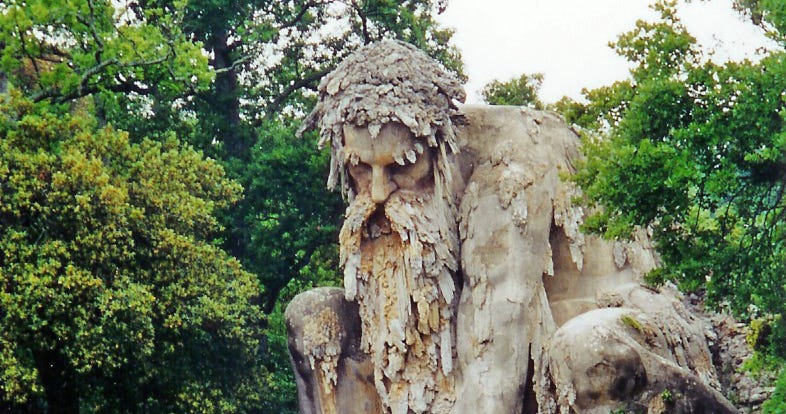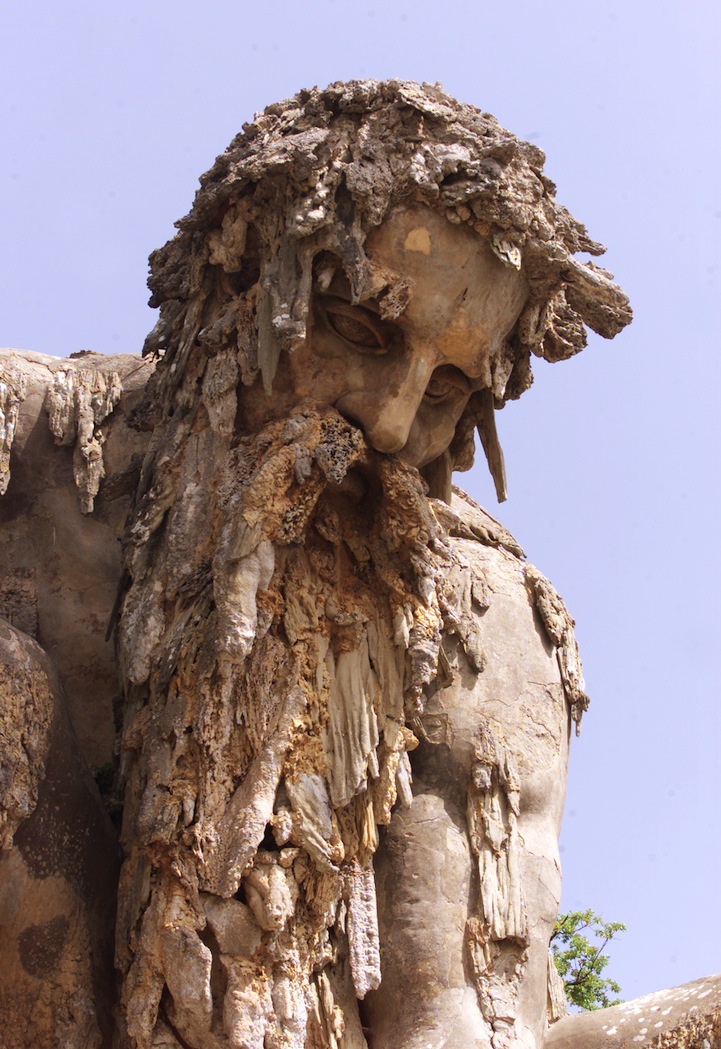Nestled in the heart of Tuscany, Italy, stands a breathtaking masterpiece of Renaissance art that has intrigued visitors for centuries – the towering “Appennino.” This colossal sculpture, standing 35 feet tall, was created in the late 1500s by Giambologna, one of Italy’s most renowned sculptors of the period. Half man, half mountain, the statue was designed as a tribute to the rugged landscape of the Apennine Mountains, embodying the power and majesty of nature itself.
Appennino: A Symbol of Nature’s Might

The statue of Appennino, or “The Mountain God,” is located in the grounds of the Villa di Pratolino, once a grand Medici estate. Built as both an artistic and architectural marvel, the statue’s rugged exterior mirrors the harsh, wild terrain of the Apennine range. With weathered stone, the statue stands proudly, watching over the vast park surrounding it, as though it were a guardian of the land.
The figure, a mountain god emerging from the rock, is a symbol of man’s deep connection to nature. Its half-human, half-geological form is carved with meticulous detail, with veins of stone mimicking the natural strata of the Earth. The powerful posture and the massive scale of the figure were designed to communicate a sense of awe, grandeur, and the overwhelming strength of the natural world.
A Hidden World Inside the Colossus
What sets Appennino apart from other sculptures of its era is not just its size and imposing form, but the secret world hidden within its massive stone body. This statue is not a mere sculpture; it is also a building, with entire rooms concealed inside that were designed with specific functions in mind.
Inside the giant colossus, visitors would discover multiple rooms, each with a unique purpose. His left hand holds a stone monster that once spewed water from an underground stream, turning the statue into a living, breathing element of the landscape. It is said that the rooms within were filled with a series of intricate mechanisms that brought the figure to life, making it not just a static sculpture but an interactive work of art.
In the statue’s head, Giambologna created space for a fireplace. When lit, smoke would pour out of Appennino’s nostrils, adding to the illusion of a living mountain god. The surreal image of a statue “breathing” smoke would have left onlookers in awe, enhancing the sense of wonder and mystique that surrounded the creation.
A Blend of Art and Nature

The Appennino sculpture is more than just a work of art – it represents a merging of architecture, nature, and Renaissance ingenuity. The integration of flowing water, hidden rooms, and smoke mechanisms shows how artists of the time pushed the boundaries of creativity, fusing different art forms and technologies into a single work. Giambologna’s statue was not just a tribute to Italy’s landscape; it was a manifestation of man’s ability to control, manipulate, and even mimic nature’s forces.
Over the centuries, the colossus has weathered the elements, becoming even more a part of the landscape it was meant to represent. Its weather-beaten surface adds to its charm, making it appear as though it has risen naturally from the earth.
A Legacy of Renaissance Engineering

Today, the Appennino remains a testament to the Renaissance’s fascination with blending art, nature, and science. Its hidden chambers and ingenious design continue to captivate art lovers, historians, and travelers who visit the grounds of the Villa di Pratolino.
The sculpture is a symbol not only of the power of nature but also of human creativity and innovation. Giambologna’s creation stands as a reminder of the endless possibilities of art when combined with engineering and the wonders of the natural world.
Whether admired for its immense scale, its artistic complexity, or the secret world hidden within its stone body, the Appennino is an enduring icon of Renaissance brilliance that continues to inspire awe to this day.

